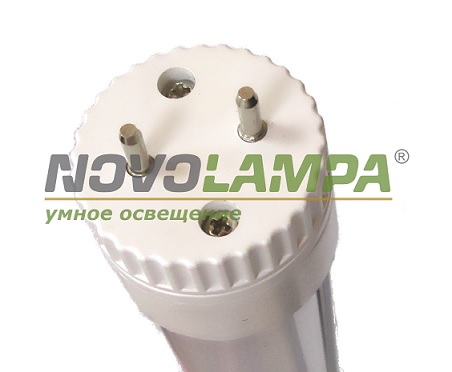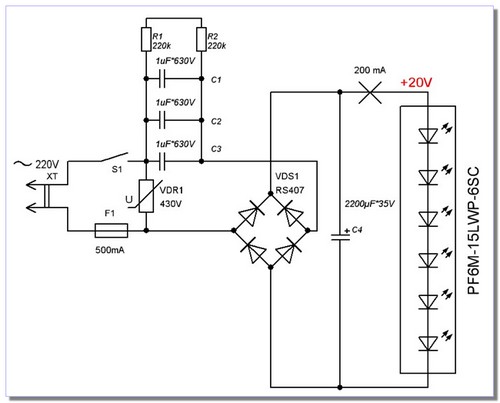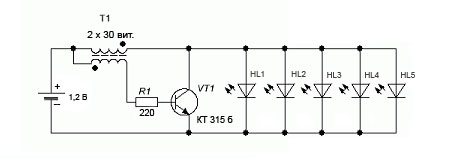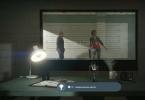Penkov A.A., LLC "Stroy-TK", 2014
Our Customers often ask us about the possibility of replacement fluorescent lamps 36W in office luminaires without replacing the luminaires themselves. We analyzed the current state of affairs in this direction in order to clearly understand the costs of the Customer for the modernization, as well as the pros and cons acquired in connection with this modernization.
Let's make a reservation right away, for the experiment we tried to select LED lamps from renowned manufacturers, excluding Noname products from the list of possible applicants. However, if someone from other Manufacturers or Distributors wants to submit their products for testing in our laboratory and the subsequent writing of an article on this product- welcome: .
Possible lamp replacement options
Once again, we remind you that for the experiment we selected LED lamps from renowned manufacturers, according to our technical specifications as close as possible to the characteristics of standard fluorescent lamps, while excluding Noname products from the list of possible contenders. However, if someone from other Manufacturers or Distributors wants to submit their products for testing in our laboratory and the subsequent writing of an article on this product - you are welcome:.
Go to service .
Thanks to their economical power consumption, safety and long service life, LEDs are now steadily replacing many traditional light sources. In particular, T8 fluorescent lamps began to be replaced everywhere with LED counterparts.
Often it is not necessary to replace the entire luminaire as a whole, but easy installation LED lamps into existing ones. And to make this process as simple as possible, manufacturers of LED lamps make them with the same base (G13), and the dimensions completely repeat the dimensions of fluorescent lamps (D = 26mm L = 600mm / 900mm / 1200mm / 1500mm / 2400mm). It only remains to modernize a little electrical circuit and LED tubes can be installed.
The entire range of these products can be viewed in the section g13 LED lamps.
Let us consider in more detail the features of installing T8 LED tubes (lamps) in lamps for fluorescent lamps.
Depending on the type light diode lamp there are two options for installing lamps:
- With AC 220V lamp connection (suitable for any original ballast).
- With connection of lamps on AC 110V (suitable only for lamps with electronic ballasts).
Note!
- When installing multiple lamps in one luminaire, use a parallel connection. Not allowed serial connection since this will result in voltage surges and damage to the lamp driver.
- Replacement work must be carried out by qualified personnel in accordance with safety standards and requirements.
1. Connecting lamps to AC 220V
:
The first option requires direct power supply of the lamps from the 50 Hz 220 V mains. In this case, you must first remove all elements of the ballast: the electronic unit or elements of the electromagnetic ballast (starter, choke, etc.). The power consumption of the luminaire will be the sum of the total power of the LED lamps.
Procedure:
- Remove fluorescent lamps.
- Delete the old electronic circuit: a) remove the electronic control gear unit; b) remove starters and remove ballast from electrical circuit, disconnect the capacitor, if any.
- Insert LED bulbs.
- Switch on the power supply.
Wiring diagram for a 220V direct-on LED lamp

After removing the ballast, the luminaires should look something like the photo below (the luminaire has been converted into two 1200 mm long lamps). Use the terminals to connect the contacts. 
Luminescent lamp type Arctic 2x36 1200mm disassembled with back side after removing all elements of the control gear for connecting LED lamps for 220V.
2. Connecting lamps to AC 110V :
The second option implies that the electromagnetic ballast remains in the circuit, only the starter is removed, such LED lamps are designed to supply a voltage of 110 V. With this connection, the power consumption of the luminaire is the sum of the total power of the LED lamps and the power consumed by the remaining ballast. In this option, more electricity will be consumed than in the first, which means that the saving effect will be less. In addition, it is necessary to determine in advance exactly what type of ballast is installed in the luminaires.
Procedure:
- De-energize the luminaire to avoid electric shock.
- Remove fluorescent lamps.
- Remove starters, retain ballast (or replace starters with LED-specific ones).
- Insert LED bulbs
- Switch on the power supply.
Swivel base. What else should you pay attention to:
The luminaires are installed in different ways: horizontally, vertically, and sometimes at an angle. Since fluorescent lamps shine 360 °, it doesn't matter how you install the lamp in the socket. But LED lamps have a directional luminous flux, so you should pay attention to the location of the slot for the socket in the lamp base, otherwise it may turn out that the LED lamp does not shine down, but to the side. The most versatile in this case is the swivel base: it fits any luminaire. 

Caps of LED lamps: a) not swivel b) swivel.
We hope that our instructions have helped you to choose and connect LED lamps correctly, and now you are fully using all the advantages of modern LED lighting.
Entering any production room, educational institution or even some apartments, you can see fluorescent lamps. They have rightfully earned a reputation as the best lighting fixtures of yesteryear. But time is running, and already now many are trying to replace lighting devices with more high-tech, durable and energy-saving - LED lamps. And yet, how to install 220 volt crystal lighting instead of LDS?
For some, such a replacement is not difficult, but the bulk of people do not know how to connect an LED lamp instead of a fluorescent one. It is easier and safer for them to change the whole lamp, and the only thing that stops them is the high cost of such a device.
But with a minimum of effort, the luminescent device very quickly turns into an LED lamp. You just need to figure out how to do it.
Connecting a T8 LED lamp
The most common housing for fluorescent lamps is T8, which is common and familiar to all LDS. For greater convenience of replacement, LEDs are also available in similar cases. The peculiarity of diode tubes is that a ballast is not required for their operation, everything that is needed is already built into the LED lamp itself.
In order to upgrade fluorescent lamp, you just need to exclude the starter and the choke from the circuit and change the voltage supply to the lamps. If electricity is supplied to the LDS according to the principle of "contact pin - phase, contact pin - zero" on each side, then the LED tubes are connected "phase to one side of the lamp, zero to the other." In this case, it does not matter which of the pins of the base will fit the wire, since each side is shorted inside the lighting fixture.
The existence of LED luminaires, which need to be connected only on one side (one pin of the base - phase, the other - zero), also takes place. Such lamps are no longer available for free sale, since they are produced in Ukraine, but it is still possible to find them. The connection side is indicated on such a light fixture.
If fluorescent lamps are replaced in a rented office, and you are not sure that you will not have to move to another over time, it will be wrong to dismantle the chokes and starters. It is better to simply turn them off and restore them to their original state. Then, if necessary, you can return the fluorescent lamps to their place, and take the LED ones with you.
Benefits of LEDs
Fluorescent lamps consume more electricity due to losses associated with the operation of the control gear. And if installed more old sample operating by means of electromagnetic ballast, energy consumption increases by another 20-25%.
The LED tube does not require a starter, ballast or electronic ballast. In addition, such a lighting device does not contain hazardous heavy metals (such as mercury), and therefore does not require special disposal, unlike luminescent ones.
Also, crystal-based lighting devices do not have flickering and buzzing, which has a more positive effect on the state of the body, both physical and mental. And the service life of fluorescent lamps is only about 6,000 hours versus 50,000 for LED lamps.
T8 LED tube
Technical advantages
The main feature that ensures a long service life of a 220-volt LED lamp is a well-thought-out heat removal from the light elements. The main radiator, providing heat dissipation, duplicates additional device in the form of a longitudinal plate along the entire length of the tube. As a result, the equipment does not overheat, which means that it does not fail longer.
In addition, there is a third point of heat removal - this is a two-sided printed circuit board, made of special fiberglass with high density.

Features of the board
Surprisingly, the contacts on the diode lamp board are not soldered. Installation is carried out using innovative contact connections, which are gold-plated in order to increase reliability and increase service life.
The driver is made on the basis of microcircuits that minimize the size and make it possible to do without parts such as a high-voltage electrolytic capacitor. As a result of these innovations, the operation of the lighting device is improved, voltage surges are reduced to zero, in particular when it is applied to the lamp, and there is no electrical interference.
The stabilizing device is mounted using a PWM (pulse width modulator), which maintains the required voltage on the LEDs with a difference in these indicators from 175 volts to 275 volts.
Maximum permissible load on a pole-width modulator is 35 watts. Therefore, even under heavy load, the temperature of the device does not rise.

Connection diagram
Connection diagram LED lamp does not represent anything difficult. Light elements based on crystals are connected to a network with an alternating voltage of 220 volts through a dimmer or to a stabilizing transformer 12 V or 24 V. If desired, a stabilizing device for connecting chips to a common electrical network can be assembled with your own hands, although the process is not easy and quite lengthy in time.
As for the T8 LED tubes with a G13 base and the like, as well as lighting devices with, then you do not need to install additional devices to connect them. All that is needed for their uninterrupted stable operation is to apply voltage to the contacts. All the necessary circuit elements are already included in the device.
In general, when purchasing, it makes sense to pay attention to the packaging of the lighting device, more precisely to the markings on it. Mandatory, in addition to information about the nominal voltage, force luminous flux and color temperature it will indicate if additional devices are required to connect the lamp.

But usually devices with a built-in dimmer are called lamps, while those requiring additional equipment- LEDs or LED-elements.
Also, the installation of a stabilizing transformer, and sometimes a controller, is also necessary when installing an LED strip. The controller is a kind of backlight brain. It is mounted on the condition that the light strip is multicolored, and "thinks over" the variable switching on different colors using the remote control.
LED flashlight circuit
In our time, portable lamps based on LEDs are also widely used. Small and headlamps can have from three to twenty-two crystal elements in their circuit. More powerful, using rechargeable batteries and the ability to recharge from a 220 V network - up to 64 LEDs. Their undoubted advantage over devices based on an incandescent lamp is in the brightness of the glow and, at the same time, in efficiency. Battery power is consumed 10 to 20 times slower. In this case, the strength of the luminous flux is several times stronger.

The thing is that ordinary incandescent lamps scatter light around them, which means that half of the luminous flux goes back. Reflectors are installed in the lanterns in order to reduce losses and direct the beam in the desired direction. But the problem is that the light bulb is very close to the reflector, which means that it blocks part of the reflected light flux.
Thus, the lamp loses about 30 percent of its light.
LEDs, unlike devices with an incandescent filament, initially shine forward, without wasting energy on lighting the space around and behind them. Of course, the reflector is also present here, but it serves more to correct the beam of the luminous flux, and not to amplify it.
The scheme by which the connection takes place led flashlight, extremely simple and quite viable when assembling it with your own hands.
Output
- a simple matter and does not require any special knowledge and skills. The main thing is to do everything correctly and clearly according to the instructions. Economical and very long service life lighting – a good option for a house, apartment or summer cottage.
With the assortment currently on store shelves, it is possible to select any type of similar lamps in any housing and for any chandeliers. Replacing any kind of lighting, even fluorescent fixtures, is very simple. Well, there is no need to talk about incandescent lamps. And the benefit from such a replacement, of course, is considerable.
Often, during the repair of premises, completely normal appearance but not working wall-ceiling luminaires with fluorescent lamps. The owner often says: "Throw away all the old, because we will buy new ones - LED!" A person is simply not in the subject and does not know that it is only necessary to slightly modernize the circuit, install T8 LED lamps with a G-13 base and use it calmly without buying new lamps, which, together with the discarded ones, will cost much more.
For the main points of choosing any LED lamps, see.
Design features.
First you need to understand what such lamps are.
In appearance, they completely repeat the shape of ordinary fluorescent lamps, which have been used for years in most public and administrative buildings. Naturally, they have inside, like other LED lamps, and the shape of the body (tube) is determined by the scope of application, in this case - a direct replacement for outdated fluorescent lamps.
T8 LED lamp housing is of two types:
- One-piece matt or transparent polycarbonate tube Ø 26 mm;
- The back half of the tube is made of and acts as a radiator, the front half is a polycarbonate diffuser.
Diffusers for T8 LED lamps are available in both clear and opaque. It should be noted here that, according to personal feelings, not high-positioned raster lamps with T8 LED lamps, which have a transparent reflector, blind a little and I personally would put such lamps in closed lamps. On the other hand, a matte diffuser “eats up” a part of the luminous flux and this must be taken into account when purchasing.
An LED bar is used as a light emitter.
Important! Some lamps have a rotary ratchet base, apparently to be able to better orient the direction of the light flux, and when installing the T8 LED lamp, you will need to follow correct location lamp contacts in the socket. IMHO thoughtful thing, convenient.
The tube length of T8 LED lamps with G-13 base corresponds to standard sizes: 600, 900, 1200, 1500 mm.
The most popular are LED lamps with a length of 600 and 1200 mm, since they are a replacement for fluorescent lamps with a power of 18-20 W and 36-40 W used in the most common lamps.
The luminous flux of T8 LED lamps is slightly lower than that of fluorescent lamps, but for the latter, this indicator drops during the service life, which is practically impossible to say about LED lamps. For example, the well-known company Osram states that with a service life of 30,000 hours, the luminous flux drop will be 0.7.
Advantages.
As always, the lifespan of LED lamps is claimed by manufacturers of 30,000 hours or more, but it all depends on the manufacturers of drivers and LEDs.
In general, replacing fluorescent lamps with T8 LED lamps has a whole line positive points:
- Safe and quick replacement of fluorescent lamps with LED lamps.
- Maintenance is not required other than occasional wiping off of dust or dirt.
- Energy saving up to 65% in comparison with fluorescent lamps on standard ballasts;
- Long declared service life up to 50,000 hours (usually 30,000 hours);
- Flicker-free. Can be used in preschool institutions;
- High color rendering index Ra> 80%. Important for photography and video filming;
- Mercury free and RoHS compliant;
- Like all LED bulbs wide range working voltage 110-240V / 50-60Hz.
Disadvantages.
Practically not, but some premium lamp models are pricey.
Chasing cheapness, you can run into a low-quality product.
Connection.
The first step in upgrading is to turn off the power supply to the lamp, and ideally remove it altogether.
Second important point is an acquaintance with the instructions and the connection diagram, which is either inside the package or drawn on it.
- Connection without upgrading the luminaire. Some T8 LED lamps are designed to be connected with electromagnetic ballasts (only the starter is unscrewed), and work with electronic ballasts is most often not allowed, but there are already some.
- Others are connected directly to the 220 V network. In this case, both the ballast and the starter are excluded from the luminaire circuit, and 220 V is simply supplied to the lamps. Additional wires may be needed here or somehow splicing the old ones together (depending on what situation).
Here is a typical wiring diagram for T8 LED lamps in a luminaire. Number of lamps of great importance does not have.

And in the end, as always, I found it on the net short video, in which the device and connection of the T8 LED lamp are shown quite simply and clearly, in a very amateurish way.




